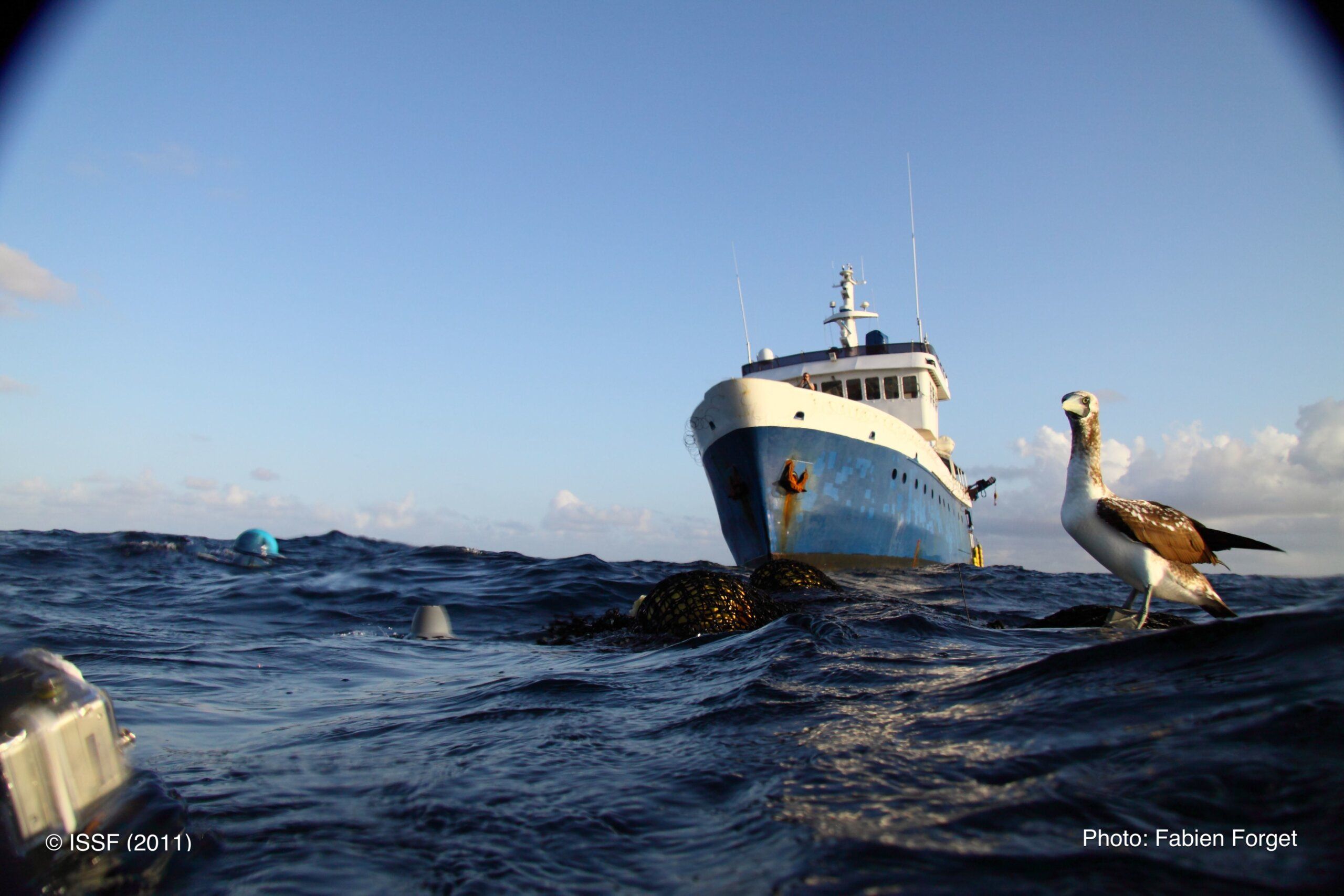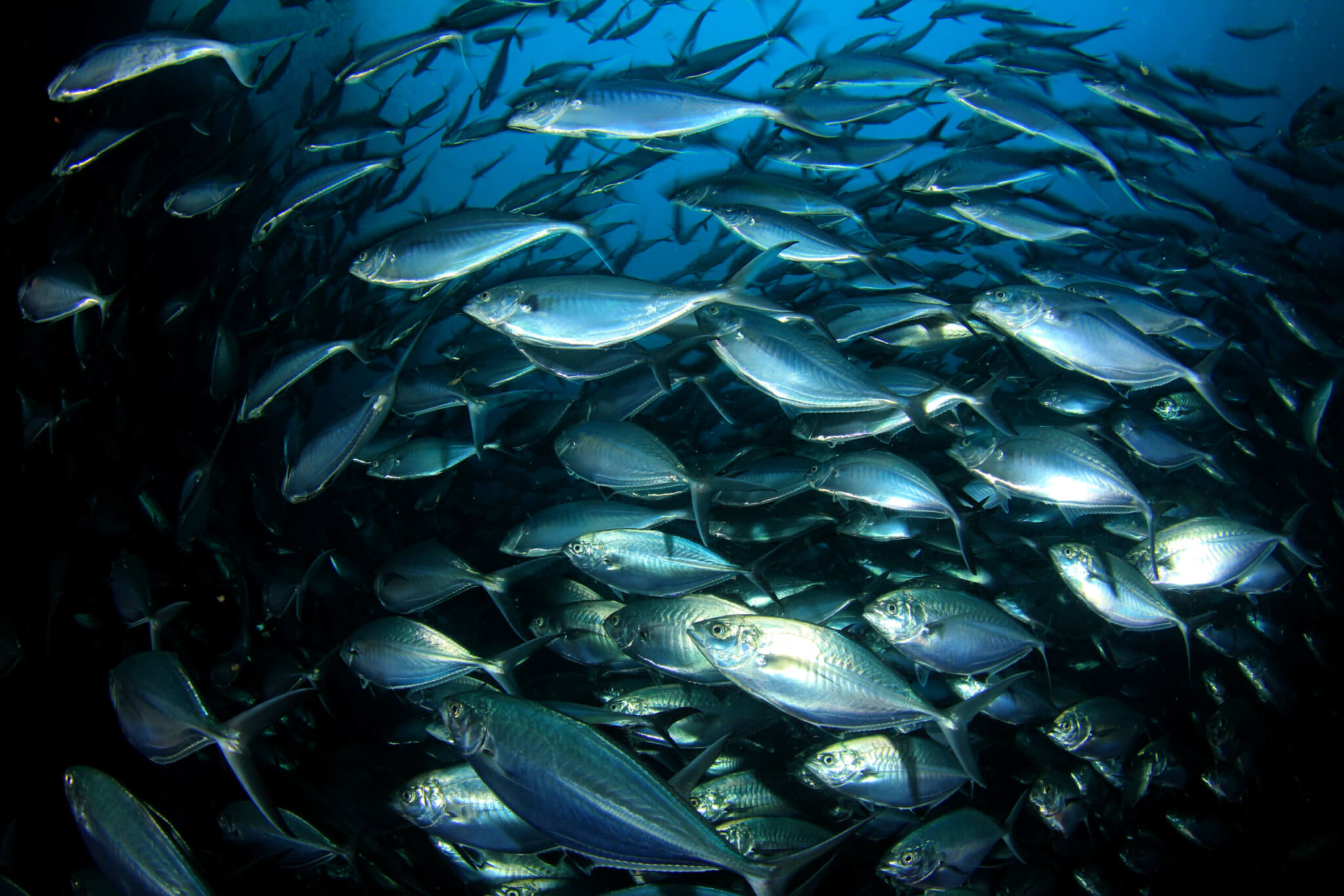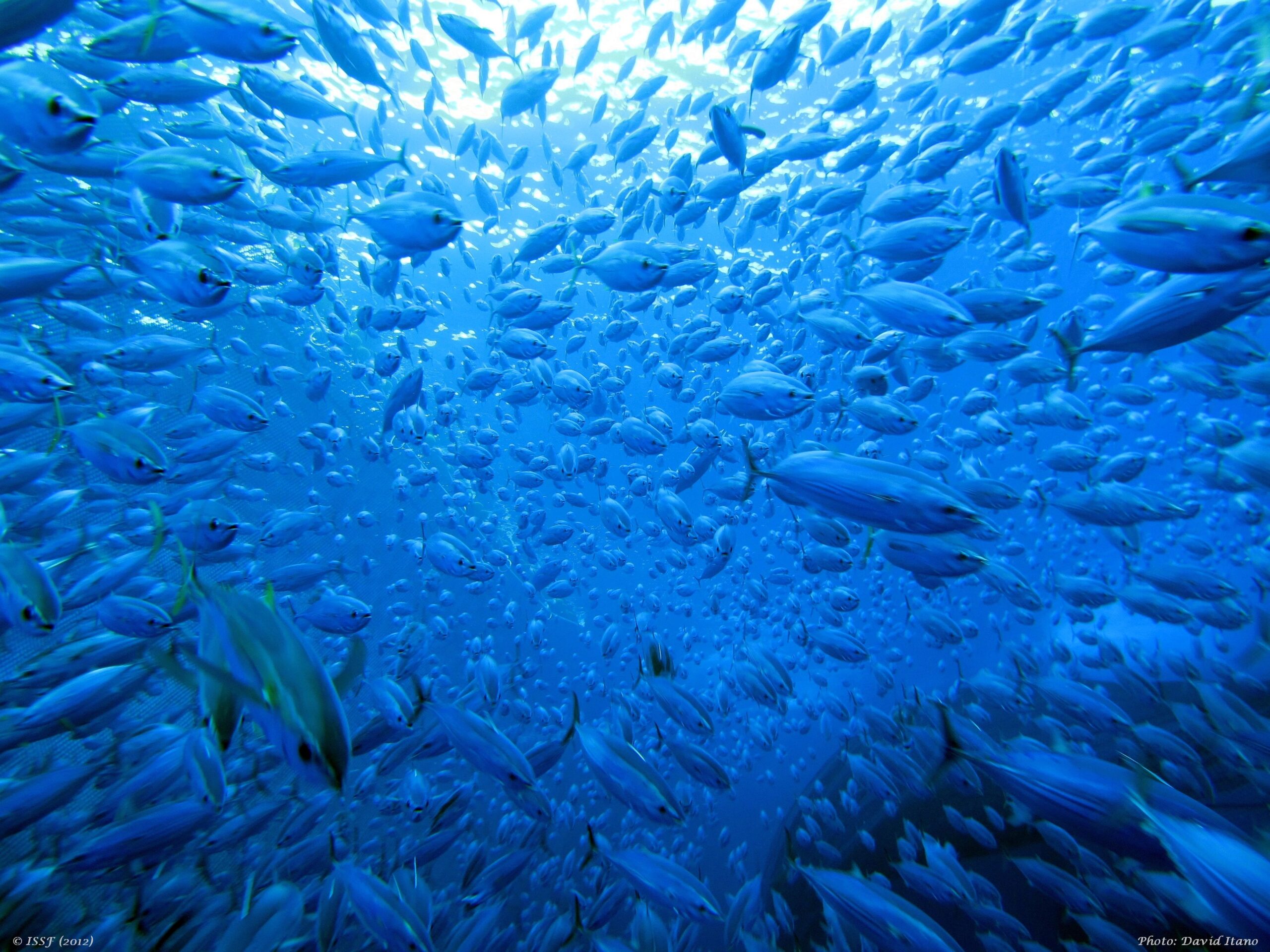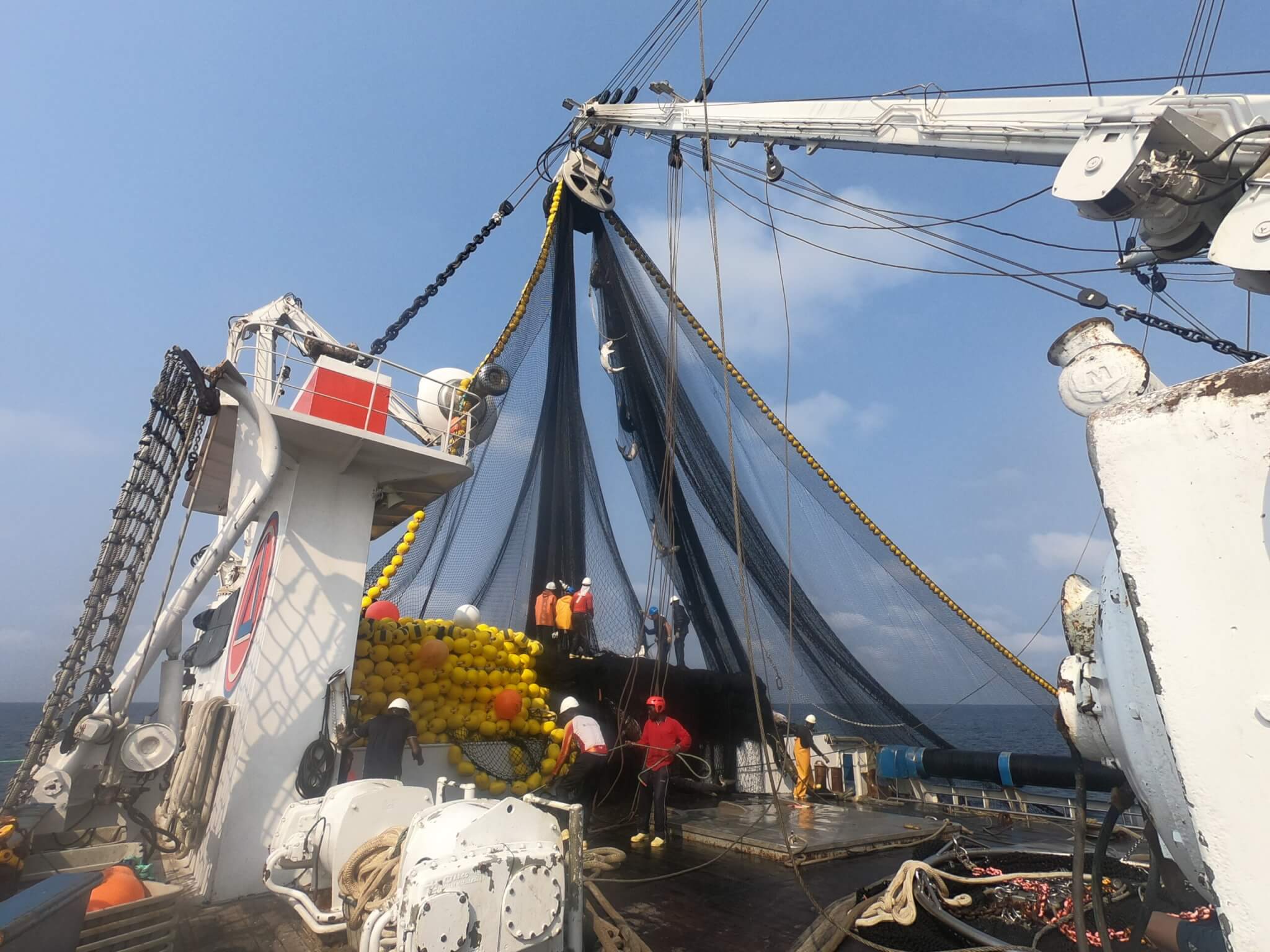Tuna Insights: Global FAD Recovery, Bycatch Report & Jelly-FAD Guide | Explore ISSF’s latest science and resources helping fishers, companies, and RFMOs strengthen tuna sustainability worldwide
Featured News
New Report Highlights Global Strategies for Recovering Tuna FADs
Galápagos Workshop Report Offers Roadmap for Effective FAD Retrieval Programs Across Oceans
ISSF has released a new report detailing outcomes from the First International Workshop on Fish Aggregating Device (FAD) Recovery, held in the Galápagos Islands in May 2024. Organized in collaboration with TUNACONS and WWF Ecuador, the workshop brought together 63 experts from across the global tuna supply chain to identify practical solutions for recovering lost and abandoned FADs before they can harm marine ecosystems.
This new ISSF report is the only publication to offer a comprehensive overview of FAD retrieval programs worldwide. It also provides the first-ever global framework for designing and implementing FAD Recovery Programs (FRPs)—both at sea and along coastlines. It outlines science-based strategies, stakeholder collaboration models, financing approaches, and policy recommendations for tuna Regional Fisheries Management Organizations (RFMOs).
Highlights from the Report:
- Blueprint for FRPs: The report defines essential components of effective recovery programs, from operational protocols and legal frameworks to real-time tracking and trajectory prediction tools.
- New Financing Proposals: Recommendations include levies on satellite buoys, extended producer responsibility (EPR) principles, and reuse of recovered FADs for scientific or artisanal applications.
- Recommendations to RFMOs: The report urges RFMOs to clarify FAD ownership rules, exempt out-of-zone FADs from active limits, and classify retrieval as a non-fishing activity, enabling broader participation in recovery efforts.
- Support for Pilot Programs: It advocates for 6-12-month FRP pilots to test, adapt, and refine program models in real-world conditions.
- Case Studies from the Field: Lessons from active programs in the Seychelles, U.S. Palmyra Atoll, and the Galápagos illustrate scalable approaches led by governments, NGOs, and fishers.
Featured Content
REPORT: Tuna Fisheries’ Impacts on Non-Tuna Species and Other Environmental Aspects
Tuna fisheries use different types of fishing gears and strategies to catch tunas. All of them have some sort of environmental impact, the most obvious one being the catch of non-tuna species, some of which are highly vulnerable.
The report Tuna Fisheries’ Impacts on Non-Tuna Species and Other Environmental Aspects, summarizes some of the main impacts for fisheries that catch the major commercial tunas. It also analyzes the environmental scores obtained by different tuna fishery types certified by the Marine Stewardship Council, showing that most of the main fishing methods have some type of impacts on non-tunas, habitats, and ecosystems. The report then reviews the management measures adopted by RFMOs to mitigate these impacts, and this information is complemented with a description of other conservation measures adopted by ISSF that enable seafood companies and vessels to improve the sustainability of tuna fisheries.
Featured Resource
Jelly-FAD Construction Guide Helps Fishers Build Netting-free, Biodegradable FADs for More Sustainable Tuna Fishing
ISSF published a comprehensive step-by-step guide that shows commercial tuna fishers how to build “jelly-FADs” — an innovative nearly 100% biodegradable and non-entangling design for fish aggregating devices (FADs).
To reduce FAD fishing’s effects on non-target marine animals and ocean ecosystems, ISSF scientists developed the jelly-FAD in collaboration with physical oceanographers from the Instituto de Ciencias del Mar (CSIC) and tuna fleets — testing and refining the design through workshops, lab research, and at-sea trials in real fishing conditions.
“The Jelly-FAD Construction Guide shows tuna fishers how to build what we believe is the most sustainable non-entangling FAD to date,” said Dr. Gala Moreno, ISSF senior scientist. “The jelly-FAD represents a new concept in drifting FADs, whose structure and materials have been relatively static for decades. To make jelly-FADs, you do not need to have unusual materials, special equipment, or advanced carpentry skills. We intend the jelly-FAD to be as simple and affordable as possible for fishers around the world to build.”
Inspired by the neutral buoyancy of jellyfish, the jelly-FAD design not only is made without netting but also is almost completely biodegradable, and it offers additional sustainability and durability advantages over previous non-entangling FAD and biodegradable FAD designs.
Download the Jelly-FAD Construction Guide
ISSF in the News
The International Seafood Sustainability Foundation Urges Action On Tuna Stocks
Deeper Blue
NGOs urging IATTC to codify harvest strategies, review Pacific bluefin management procedures at upcoming meeting
Seafood Source



